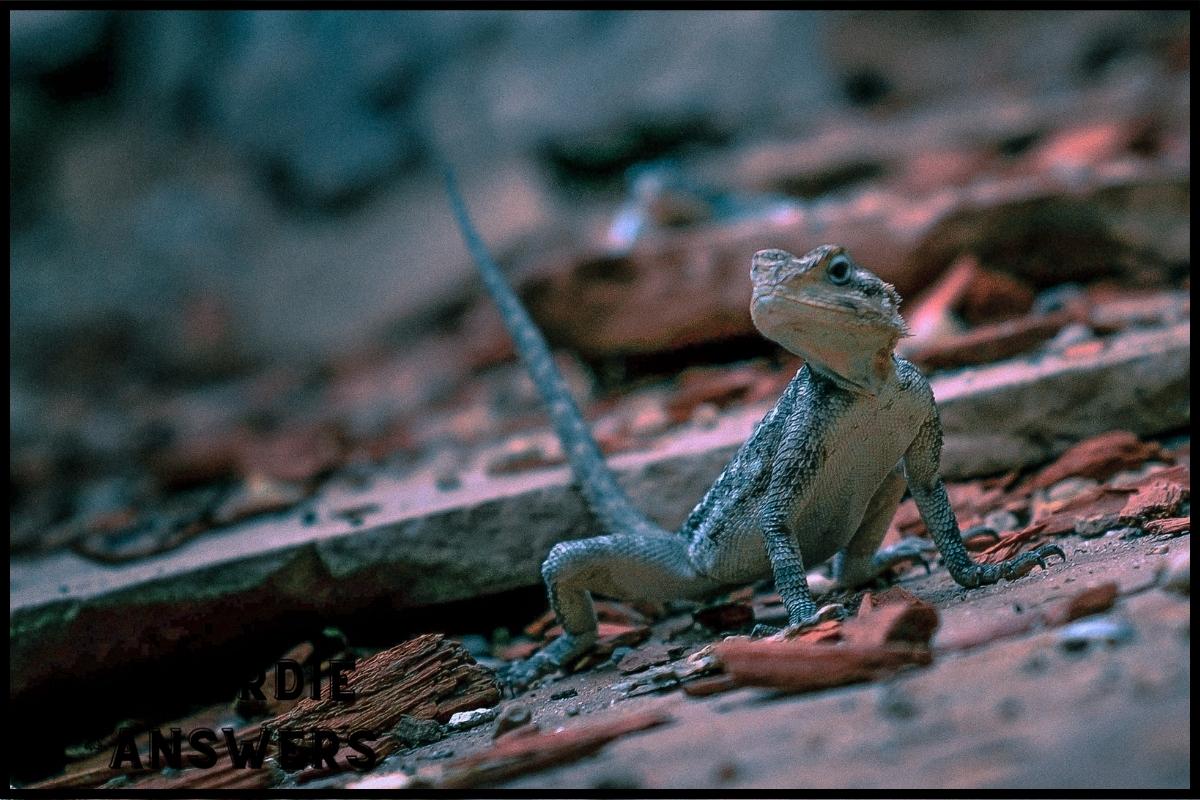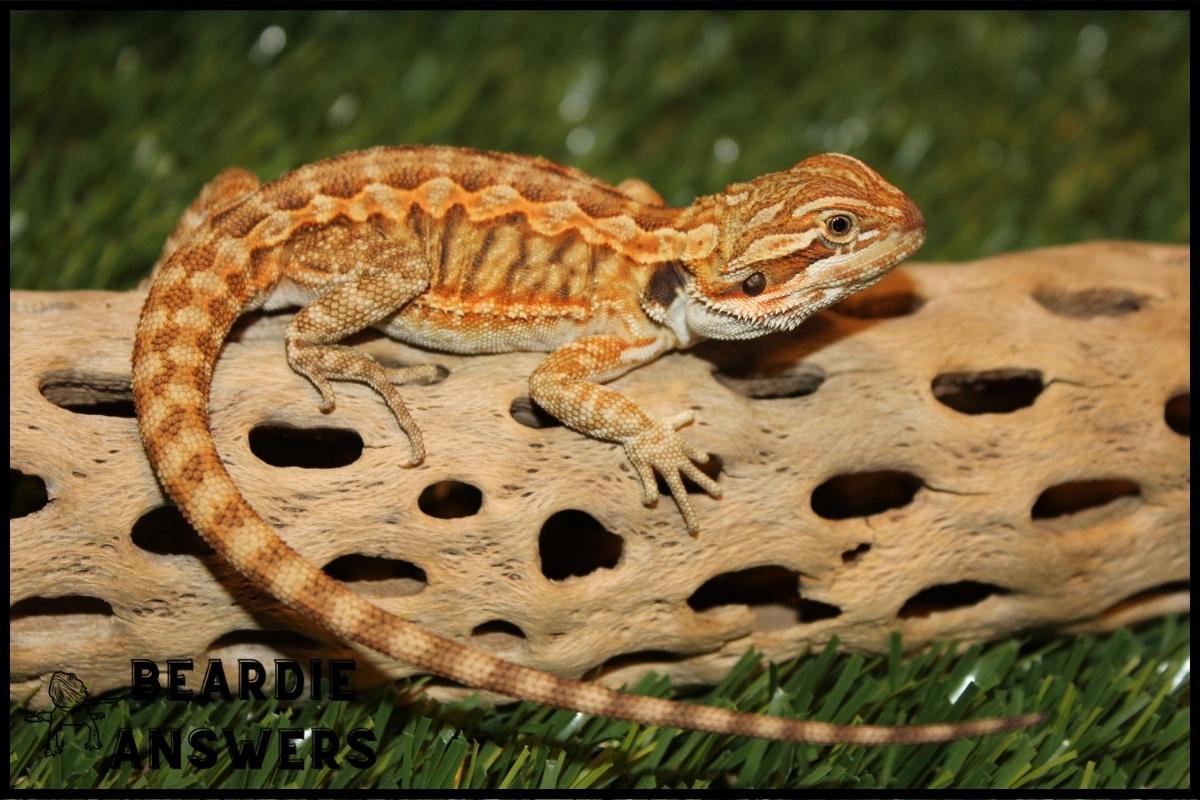Are you a proud bearded dragon owner? Do you want to know what your pet is thinking or how they are feeling? If you said yes, this blog post is for you! We’ll go over the various signs and behaviors that can indicate how a bearded dragon is feeling. You’ll also learn the best ways to interact with your pet in order to keep them happy and healthy.
What You'll Learn
Physical Indicators of a Bearded Dragon’s Mood
[su_box title=”What You’ll Learn” box_color=”#5a5a5a”]
- Physical indicators of a bearded dragon’s mood are important to recognize because they can provide you with information about your pet’s health.
- Body posture and positioning are two of the most obvious signs.
- Eye color and expression are another visible indicator.
- The behavior of a bearded dragon’s tail is also an important indicator of its mood.
- Their skin’s color and texture can also indicate their mood.
[/su_box]
Body Posture and Positioning
Body posture and positioning can indicate your bearded dragon’s mood. When they are relaxed and content, their arms and legs may be seen spread out, whereas when they are aggressive or threatened, their limbs will be tucked in close to their body. If your bearded dragon is ill, he or she may be seen lying down or sleeping more than usual.
Eye Color and Expression
Bearded dragons’ eyes can change color to express their mood. A relaxed bearded dragon’s pupils are usually large and black, with yellow or pale blue eyes. When a dragon is stressed or aggressive, his or her pupils narrow and his or her eyes narrow.
Tail Behavior
One of the most obvious indicators of a bearded dragon’s mood is its tail behavior. When a bearded dragon is happy or content, its tail curls up or waves in the air. This is a sign of excitement and alertness, and it can be seen when dragons chase after prey or run around.
When a bearded dragon is afraid or aggressive, its tail may be held close to its body and sway from side to side. If your bearded dragon is ill or stressed, it may hold its tail low and motionless.
Skin Color and Texture
Bearded dragons can communicate a lot by changing the color and texture of their skin. Smooth, even-colored skin is typical of healthy bearded dragons. However, if they are stressed or ill, their skin may turn yellowish or darker. You may also notice raised bumps or discoloration in your bearded dragon’s skin, which can indicate an infection or other health problem.
Behavioral Indicators of a Bearded Dragon’s Mood
[su_box title=”What You’ll Learn” box_color=”#5a5a5a”]
- When bearded dragons are relaxed and happy, they may become more active.
- When they are aggressive or stressed, their activity level decreases and they may become less responsive to touch and handling.
- They may also exhibit aggressive behaviors such as head bobbing, glass surfing, and waving.
- Knowing these behaviors can help you identify when your bearded dragon is in a bad mood so you can take the necessary precautions.
[/su_box]
Activity Level
The level of activity in bearded dragons can indicate their mood. A happy and relaxed dragon will move around the enclosure, exploring and sunbathing. A stressed or sick dragon, on the other hand, will be less active and may spend more time hiding or sleeping.
Take note of how your beardie reacts to handling and touch, as this can give you an idea of how they are feeling. When handled, a relaxed and content dragon is more likely to remain calm, whereas an agitated or stressed dragon may become aggressive or attempt to flee.
Paying attention to your beardie’s activity levels is an excellent way to gauge their overall mood.
Feeding Behavior
One of the most important indicators of a bearded dragon’s mood is feeding behavior. A bearded dragon is more likely to eat if it is happy and relaxed. Bearded dragons who are ill or stressed may be less interested in eating or refuse to eat at all.
An active appetite and a willingness to try new foods are also signs of a healthy feeding behavior.
Interaction With Other Animals and People
A happy bearded dragon may show interest in people by climbing up their arms or nuzzling their hands when they are relaxed and secure. Bearded dragons may also try to play and interact with cats, dogs, and other pets. Surprisingly, they frequently appear to recognize their owners and are eager to receive their attention and affection.
All of these behaviors indicate a healthy and content bearded dragon that has been provided with the proper environment to thrive.
Responsiveness to Touch and Handling
Bearded dragons are sensitive to touch and handling. They may enjoy being petted and handled if they are in a good mood. To show affection, they may even rub their heads against your hand or arm.
If they are in an aggressive mood, however, they may not tolerate being touched at all. If your bearded dragon is sick or stressed, you should avoid handling them until they feel better.
Common Moods and Their Indicators in Bearded Dragons
[su_box title=”What You’ll Learn” box_color=”#5a5a5a”]
- Bearded dragons exhibit several distinct moods that can be identified through their behavior.
- In a relaxed state, they may exhibit head bobbing, arm waving, bowing, and tail swinging. This indicates that they are happy and content.
- When they are aggressive, they will darken their body or beard color out of rage, fear, stress, or illness.
- You can tell if they are sick or stressed by their posture and positioning – they may lie down with their chin tucked into their chest and remain motionless for long periods of time.
[/su_box]
Relaxed Mood
Certain physical and behavioral indicators indicate that a bearded dragon is in a good mood. Physically, they will have a bright and alert expression in their eyes, an upright body, and a still tail. They will be active but not overly so, as they will most likely move around leisurely throughout the day or bask in the sun for extended periods of time.
They will also be more sensitive to touch and handling, displaying curiosity and trust in humans. They may even follow you around the room or approach you for attention.
Aggressive Mood
In an aggressive mood, bearded dragons will often adopt a defensive posture, with the head lowered, body extended, and tail raised. They may also exhibit arm-waving, bowing, and chin-rubbing behaviors. Their eyes may be wide open, and their skin may be darkened. When threatened, they may hiss or puff up their beards.
Sick Mood
Certain symptoms may be displayed by a bearded dragon who is ill. They may become more sluggish and inactive, and their appetite may diminish. Their skin might appear dull and dry, and their eyes might appear sunken and cloudy. They may also have a darker beard or body color, which is an indication of stress or illness.
In these cases, it’s critical to keep an eye on your dragon’s behavior because it could indicate that they require medical attention. Take your bearded dragon to the vet if you notice any of these symptoms.
Stressful Mood
When placed in an unfamiliar or uncomfortable environment, bearded dragons may exhibit signs of stress. Physical manifestations of this mood include darker, duller skin, changes in eye color, and a retracted tail. They may also become less active and interact with their surroundings less.
A decrease in appetite, less responsiveness to touch or handling, and isolating themselves from other animals or people are all behavioral indicators. If you notice these signs in your bearded dragon, you should try to make their environment more comfortable for them.
[su_box title=”Things to Remember” box_color=”#5a5a5a”]
- Body posture and positioning, eye color and expression, tail behavior, and skin color and texture are all physical indicators of a bearded dragon’s mood.
- Tail behavior, such as curling up or waving, can indicate contentment or happiness in a bearded dragon, whereas a motionless tail can indicate fear, aggression, or stress.
- Skin color and texture changes can indicate stress or illness, whereas a healthy bearded dragon has smooth, even-colored skin.
- Bearded dragon activity and feeding behavior can also indicate mood, with a relaxed and happy dragon being more active and eating more, whereas a stressed or sick dragon may be less active and not interested in eating.
- Interaction with other animals and people and responsiveness to touch and handling can also give insight into a bearded dragon’s mood and wellbeing.
[/su_box]

Hi! My name is Bryan, I am the “one behind the words” here are BeardieAnswers.com. I believe that providing quality care and nutrition is the best way to ensure the health of your pet. Every beardie is special and deserves the best care and attention. If you have questions about your bearded dragon, please don’t hesitate to ask! View My Full Author Page




